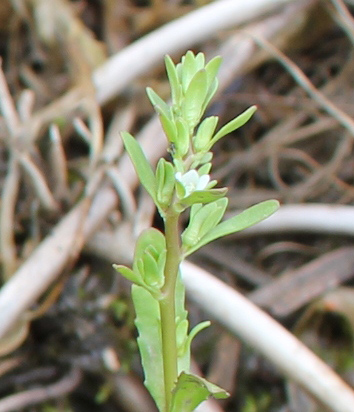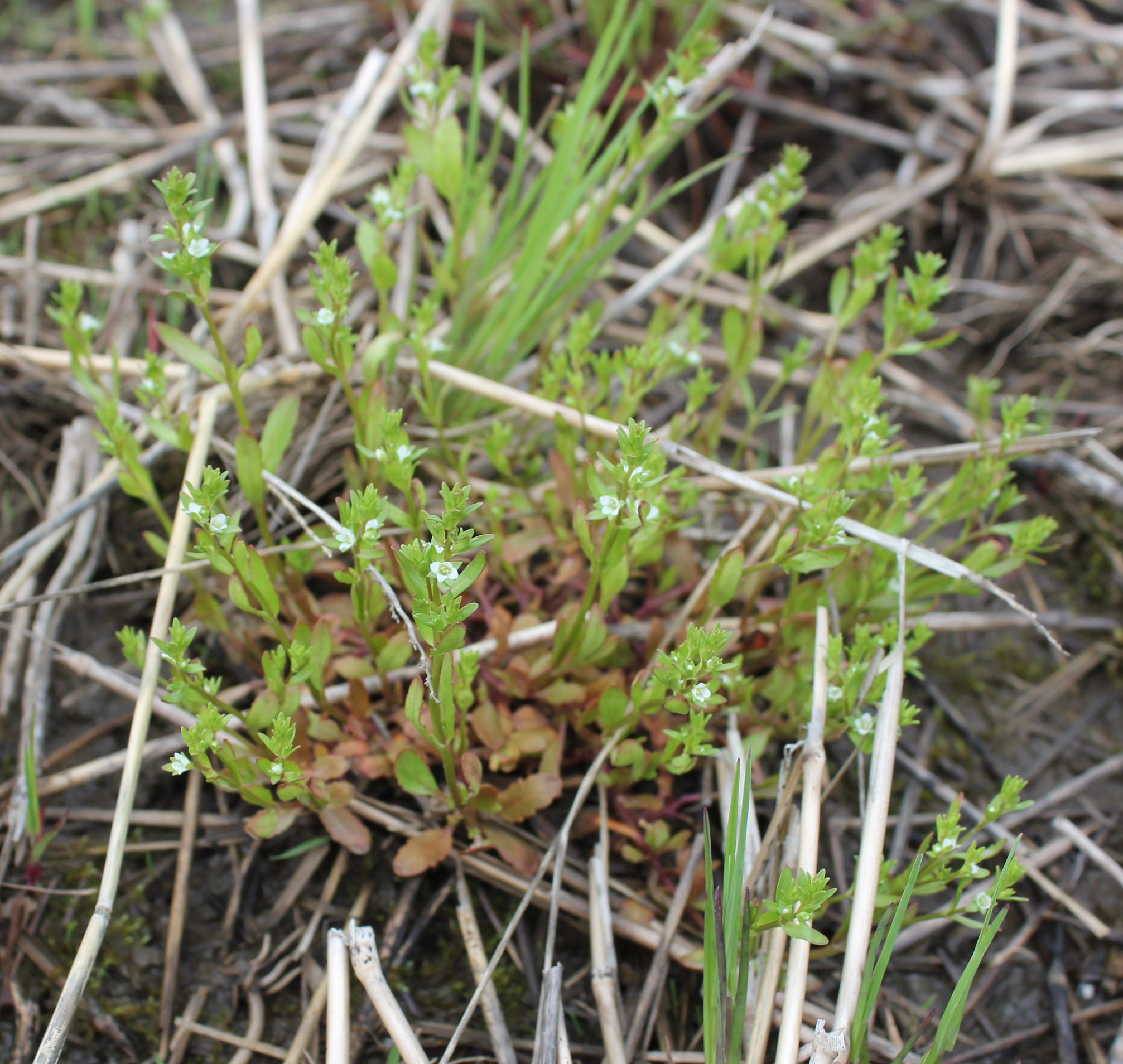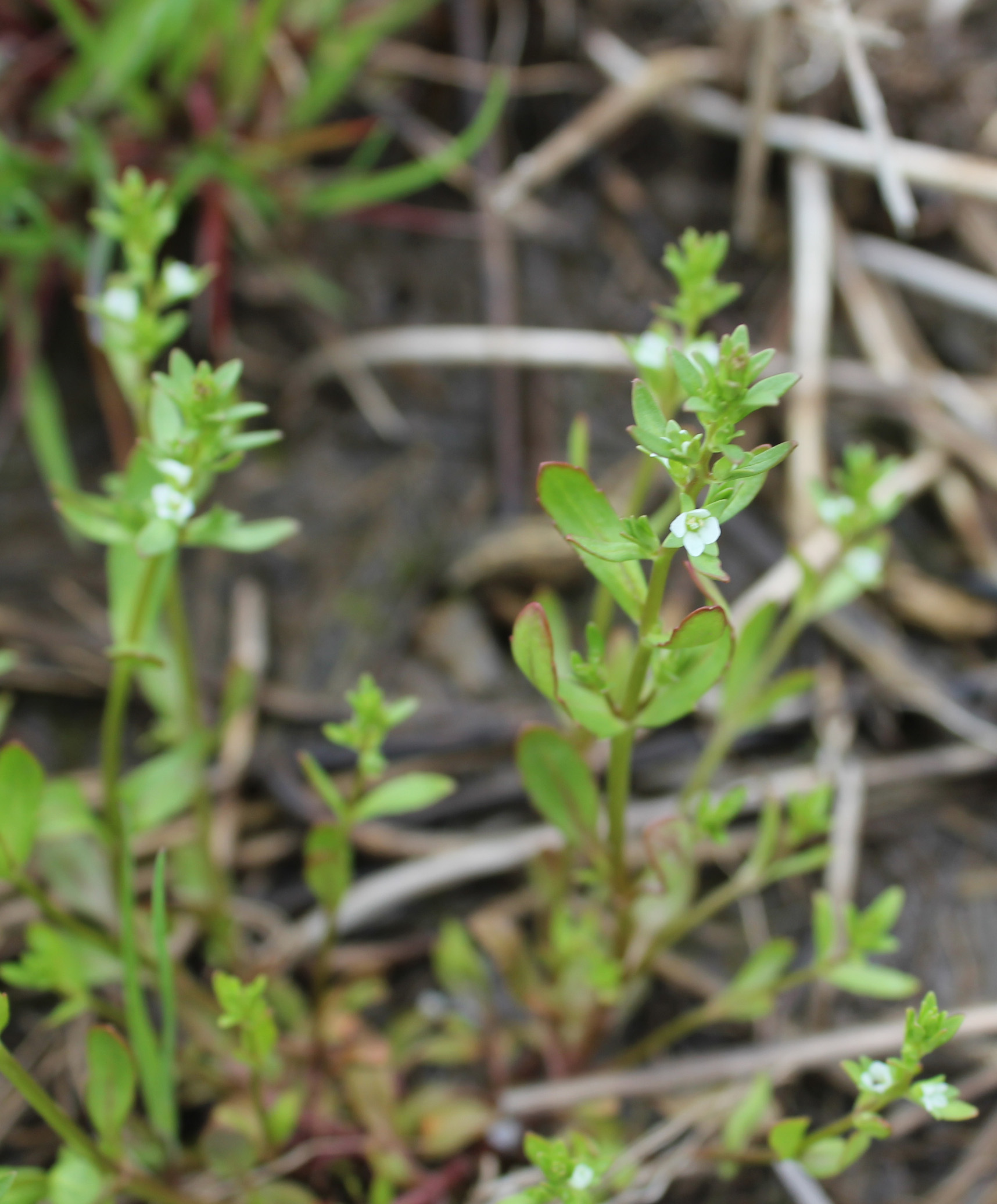Purslane Speedwell
- Figwort or Snapdragon family (Scrophulariaceae family):
- Veronica peregrina L.
- EPPO code:
- VERPG
- Other names:
- Neckweed
Species information
- Lifecycle:
- Annual, winter annual.
- Propagation:
- Reproduces by seed only.
- Emergence:
- Seed germinates in the fall and in early spring.
- Habitat:
- Purslane speedwell is most commonly found in fall/winter cereals and turf grass. It is rarely found in spring-planted field crops because primary tillage or pre-plant burn down removes young seedlings.
- Competitiveness:
- Purslane speedwell is not considered a strong competitor and does not interfere with harvesting because it grows low to the ground and is often done flowering and producing seed by early summer.
Identification clues
Seedling
- Cotyledons:
- Oblong to ovate.
- First leaves:
- Purslane speedwell’s first leaves are opposite and oblong. They have smooth or irregularly-toothed margins, are hairless and have a fleshy texture.
- Mature leaves:
- The mature upper leaves of purslane speedwell are alternately oriented on the stem, and smaller and narrower than the lower leaves. Each upper leaf has a small, white flower in its axil on a short stalk.
Mature plant
- Stems:
- The plant’s stem grows erect or branched from the base. The stalk may be smooth or have fine sticky hairs that give it a fleshy texture.
- Flowers:
- Generally, purslane speedwell flowers in the spring to early summer and then again in the fall. Each plant has numerous small, white, four-lobed flowers on short stalks. The seed pods are heart shaped and hairless.
- Seeds:
- Each heart-shaped seed pod contains several yellowish/orange seeds that are roughly 0.5 mm in size.
- Roots:
- Fibrous, shallow root system.
Often mistaken for
I know it's not Bird’s-eye speedwell because purslane speedwell is hairless and has white flowers, whereas bird’s-eye speedwell is hairy with light blue flowers.
I know it's not Common speedwell because the leaves below purslane speedwell’s flowers are alternate and hairless, whereas common speedwell’s are opposite and hairy.
I know it's not Corn speedwell because the leaves and stems of purslane speedwell are smooth and hairless compared to the hairy leaves and stems of corn speedwell.





Updated: January 13, 2023
Published: January 13, 2023